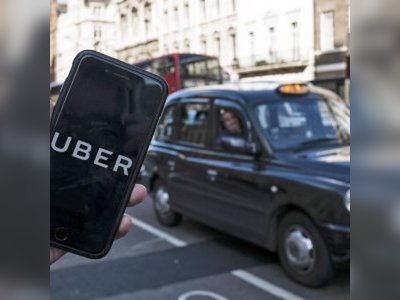
Will virtual-reality gyms let us work out in the pandemic?
In the darkness, my hands glow neon-blue. I turn my head and glimpse a set of buttons hovering in the air. I press one of them and am transported into a stadium where a crystal spins in front of me; a similar one spins in the far distance. All around me, flashes of electricity signal that I’m about to enter a wild skirmish. I grab some handles and start to chest press.
This is Black Box vr. It’s billed as the world’s first virtual-reality gym and occupies an unassuming grey building in downtown San Francisco. Aside from the unavoidably analogue showers, locker rooms and protein-powder dispensers, the experience is almost entirely digital. You enter a private chamber, the size of a large walk-in closet, which has been kitted out with exercise cables and a retractable arm that keeps your chest in place while you perform a succession of weight-bearing routines. Having strapped on a vr headset, you are swept away to a virtual arena where you fire your weapons by repping intensely, in order to destroy your enemy’s crystal before he destroys yours. Your scores are placed on a leaderboard where you can compare your achievements with those of other gym-goers (currently you compete against a computer but Black Box hopes that soon you’ll be able to take on other cubicle-dwellers).
Ryan DeLuca, the company’s founder, wants to cultivate the level of addiction among his gym’s users that you find among hardcore gamers. Black Box aspires to emulate the success of blockbuster titles such as “Fortnite” and “League of Legends”, habit-forming games that ensconce their players in fantasy and escapism. “That level of exploration, immersion and discovery is not something that people are typically able to do while exercising,” says DeLuca.
I did not find the experience entirely intuitive. During a trial run, my squatting, jerking and jiggling caused the headset to slide down my face. Adjusting the grip to the point that it sat snugly, without making me feel like the circulation to my brain had been cut off, was a fine balance. I flailed my hands to locate the required handles, frantically trying to find the right set of cables for the required exercise. I certainly felt stimulated, if rather overwhelmed.
Others are true believers. Marco Chiang is a software engineer based in San Francisco. At his peak, he used to go to Black Box almost every day and moderated its fan channels on social media. He and his friends would post monthly progress photos of their increasingly chiselled bodies. One of them worked out how to hack Black Box’s weightlifting system so he was able go back three or four times a day without getting tired, just so he could raise his standing on the leaderboard.
Black Box reconciles two contradictory currents in Silicon Valley. Our atomised culture – which is currently exacerbated by the coronavirus pandemic – was pioneered in this part of the world. It’s now possible to live a life that’s digitally enmeshed but entirely sedentary: scrolling through social-media feeds, summoning food with the tap of an app, chatting to friends through a webcam. Yet there are few places where exercise and fitness classes are more popular. Yoga, weights, barre, high-intensity interval training, Pilates, boot camp and other crazes all have a foothold in the Bay Area, where until recently heaving herds of people leaped, bent and sweated together.
Not all exercise freaks are convinced by the concept behind vr workouts. Jenny Xu, who is teaching quarantine-friendly online fitness classes, reckons that many people won’t be willing to shell out for an expensive headset. She also thinks that intense exercise may compound the phenomenon of vr nausea, an effect that some people feel when movement in the simulated world falls out-of-sync with the body.
Xu is touting a fitness game of her own. Her augmented-reality app, Run To My Heart, is set in an alternate universe in which humans have been turned into literal potatoes on couches. Joggers are provided with a virtual companion who encourages them and develops, the further you go, from running buddy to friend to romantic interest. This avatar recounts titbits about landmarks they are passing and gives them updates about other app users whom they might know.
Black Box was forced to close when a shelter-in-place order was issued in San Francisco on March 16th in response to the outbreak of covid-19. The company had assured its clients that headsets were disinfected after every use but, in the current climate, the idea of sharing one with a total stranger is about as appealing as licking a car tyre.
Still, perhaps vr exercise has a better chance of thriving in this strange new world than more conventional gyms and yoga studios. After all, social distancing was already part of the package at Black Box. Silicon Valley is keeping millions of people productive, fed, watered and somewhat sane in these fraught times. Maybe it can also keep us fit? There is certainly demand. When lockdown began to bite in China in February, fortnightly sales of yoga mats and rowing machines in the country leapt by 250% on the previous year, according to Reuters.
Of course, another solution to the exercise conundrum may be staring us in the face – or rather under our feet. As an avid runner, I was bemused by headlines proclaiming a running boom due to coronavirus. On my regular jog a week-and-a-half into lockdown, I emerged alone from the green expanse of Golden Gate Park onto the sun-kissed boardwalk of Ocean Beach. True, there was no one around then. But with low barriers to entry, there is enormous scope for running to grow. Amid the proliferation of streamed workouts and Instagram classes, perhaps the main beneficiary of the closure of gyms will be the most primal exercise of all. And if you really need a technological fix? Xu plans to launch her app around the end of the year. Though if you wait that long, you may have turned into an actual potato.










